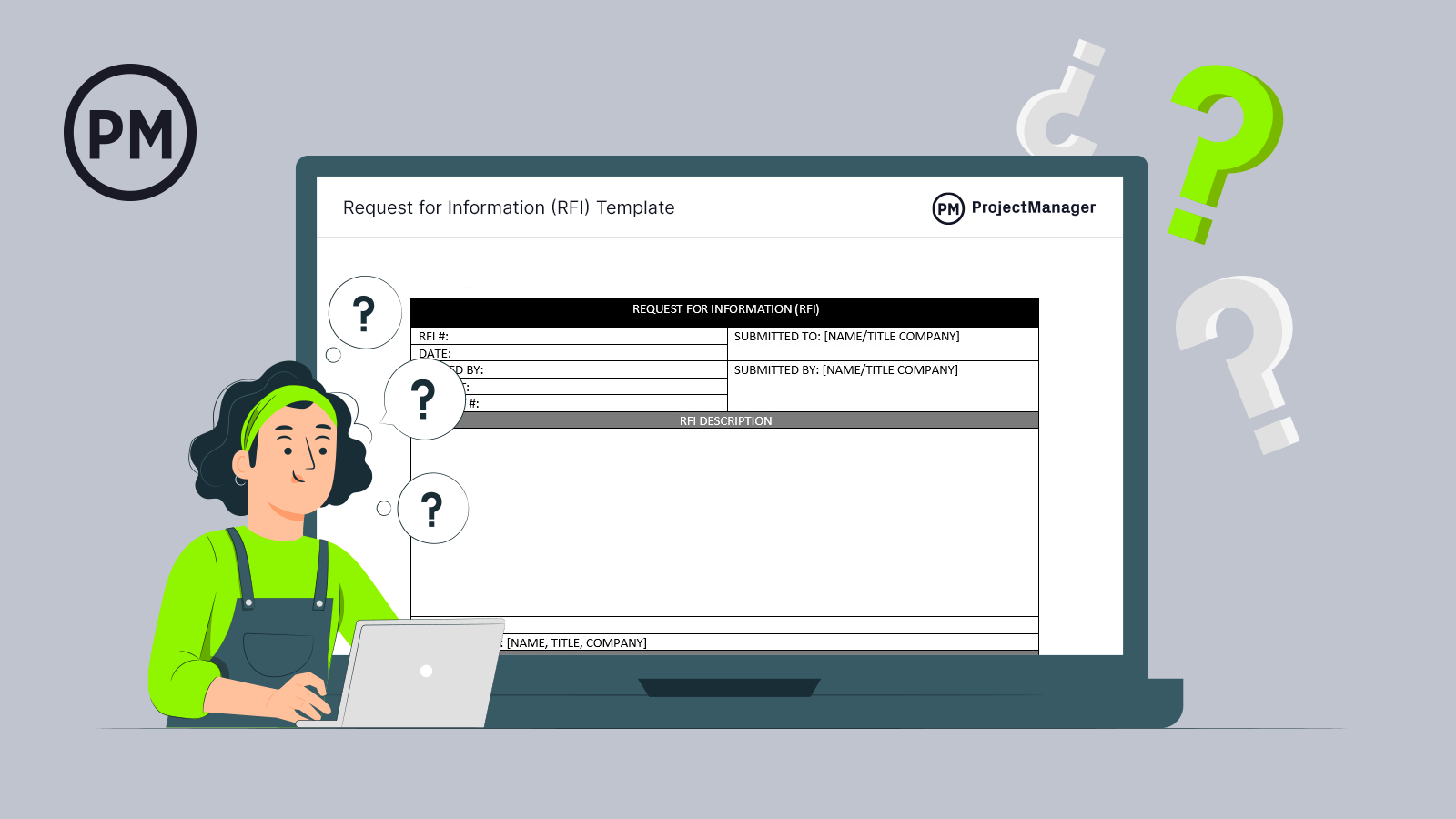Throughout the execution of a project, there are points at which procurements require some clarity. To get the answers to questions and capture the back and forth with the supplier in a paper trail, a request for information (RFI) is required.
Having a procedure that brings clarity to the procurement process helps the project run smoothly. Using our free RFI template saves you time and effort. There is space for all the information you need to provide and the questions the supplier needs to answer.
Once you begin a business relationship with a vendor, you’ll need to manage the procurement process. Project management helps you track supplies throughout the life cycle of your project. ProjectManager helps you organize your vendors in a list view that collects all their pertinent information, which can be shared easily with security settings to show the schedule as view-only. To manage your procurement process, set it up on our customizable kanban boards and get transparency into the process and see the percentage complete in real-time.
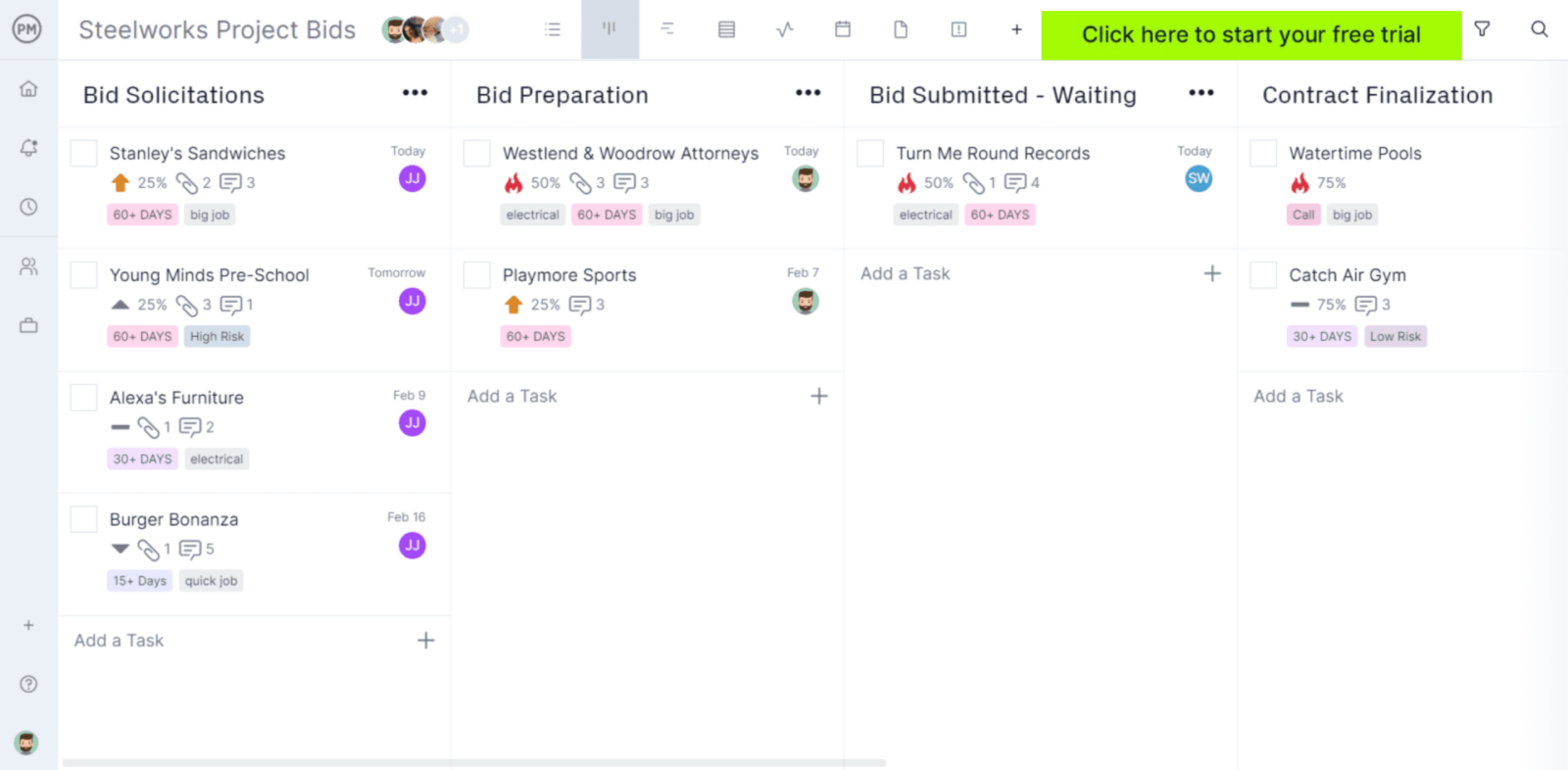
What Is an RFI, or Request for Information?
An RFI is a request for information—a document that formalizes the collection of information on products, goods and services from existing or potential suppliers. The RFI comes from a customer and is sent to the supplier.
It can be general questions related to the good or service offered by the supplier, but it can also be used to pose a question about a product, good or service that has already been purchased.
In most cases, the RFI helps you determine the characteristics of the supplier you’re considering working with. This creates a pseudo-screening process to whittle down a large group to a handful of potential companies.
Using an RFI is a common business practice when deciding on the next steps. They work in tandem with a request for proposal (RFP), a request for tender (RFT) and a request for quotation (RFQ). Often the RFI is the first step in supplier relationship management.
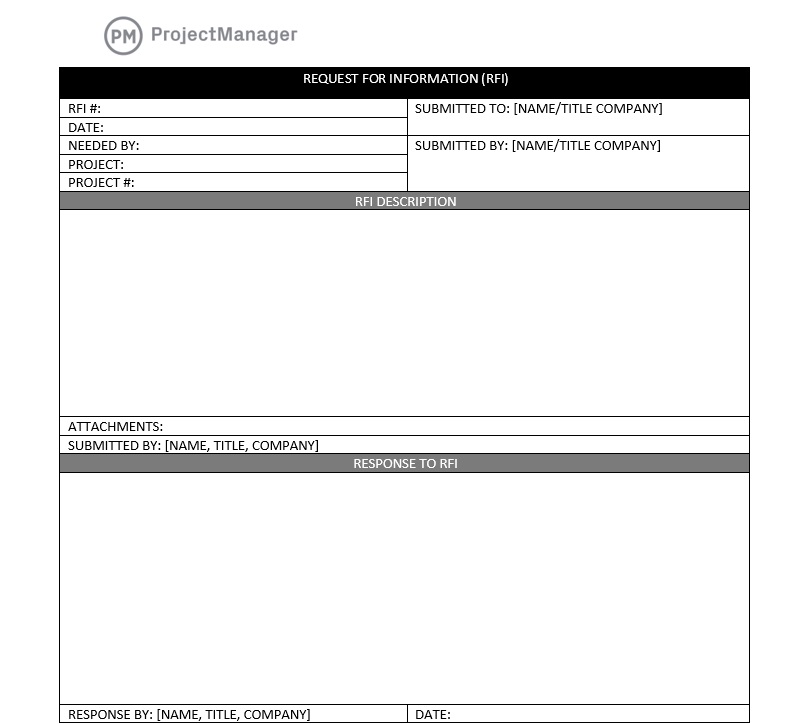
Why You Need an RFI Template
The RFI is used to solicit information in a formal and structured manner to keep everyone informed. It serves several industries, primarily construction, as a means to identify the requirements of the customer and at the same time get answers to specific questions from the supplier.
Using an RFI helps customers learn about the market for the supply or service they need. It gathers that information in a way that it’s easy to communicate and understand, which helps in decision-making.
That said, the information gathered by the RFI is simple. Mostly, it asks about the size of the company, a bit about its history and what it specializes in. There could be requests for customer case studies, references, profiles of its executive suite and so on.
It’s also helpful as a part of the larger documentation for solicitation, which includes the RFP and RFQ. They all work together to help select the right product, good or service for the job. However, an RFI is not the process by which a supplier is selected, it merely responds to questions about what the supplier is offering.
While market research is a better fit for an RFP, the RFI can filter the long list of suppliers down to a handful that is appropriate for your needs. The work that goes into writing an RFI is well worth the return.
If you don’t take the time to write an RFI, you will not have common criteria to compare different proposals. The RFI keeps your decisions based on the same specifications. If you don’t write an RFI, chances are you’ll just have to do it later in the procurement process, which wastes time.
Once you’ve settled on a supplier, the RFI will help you smooth out the edges and respond to questions you have about the product, good or service. Without an RFI, you’re just setting yourself up for a conflict down the line.
The RFI gives you a chance to learn about your suppliers and get a better understanding of what they offer before having to explain the details of the project. This allows you to get a more objective answer from them and see if they are the right supplier for the job.
When to Use an RFI Template
You use an RFI template when making a project procurement and is the first step in the procurement process. The RFI is used to overcome a challenge, though that doesn’t mean you know what the solution to the challenge is. It’s a way to figure out what your options are.
An RFI template can be used for one-time or recurring procurement projects. It’s especially helpful for the latter as it helps you create a vendor project. It creates a shortlist of viable suppliers that can be referred to when you need similar products, goods or services.
After you’ve gotten back your responses to the RFI and have narrowed down your choice of suppliers to a more manageable group, you’ll use those answers to send out an RFP. This will request more detailed information from the company bidding for the work.
Who Should Use the RFI Template?
The RFI template is used by the project or procurement manager, depending on how your organization is structured, to start the process of soliciting bids for products, goods and services. The RFI template is then sent to suppliers and vendors.
These suppliers and vendors will fill in the pertinent information and return the RFI to the project leader responsible for procurement.
Whoever is in charge of writing the RFI should make sure it includes the following.
- The request for information should be simple and easy to compare
- Make it clear for suppliers and vendors to respond
- Don’t be too specific — keep it general
- Don’t take too much of the vendor’s or supplier’s time
How to Use ProjectManager’s RFI Template
The free RFI Template in Word from ProjectManager is all you’ll need to start the procurement process on your project. It is an essential tool when creating contracts between the project and its vendors and suppliers. The RFI template has space for all the information you need to collect.
Request for Information (Top)
The first section of the RFI template collects important tracking details. Here you’ll be able to number your RFI for internal use. There’s a space for the date the RFI is issued and then the date by which a response is needed. There’s also a field to write down the name of the project, to whom the RFI is submitted and by whom.
RFI Description
A large space is provided for you to write the information you are looking for. Here you can pose your questions. Remember not to go into too much detail. Keep things short and to the point. Beneath this is a space to note whatever attachments are included and who submitted them.
RFI Response
There is another large space for the vendor or supply to respond to your RFI. Underneath that is a field for the person who responded to date and sign.
How to Use an RFI Template in ProjectManager
ProjectManager is an award-winning tool that organizes teams and projects to make them work more efficiently. As you’re going through the procurement process, you can use cloud-based project management software to make the process more productive.
Use the tool to manage the procurement process, listing all the vendors and suppliers on a task list, where you can collect important information, such as their name, address and contact. These lists are online and shareable or you can restrict access, depending on your policy.
Once you have chosen a vendor or supplier, you can manage the whole process of getting supplies on a kanban board, one of our multiple project views. The board is made up of columns that represent stages of your production cycle. Under the column are cards that represent the supplies you’re getting from your vendor.
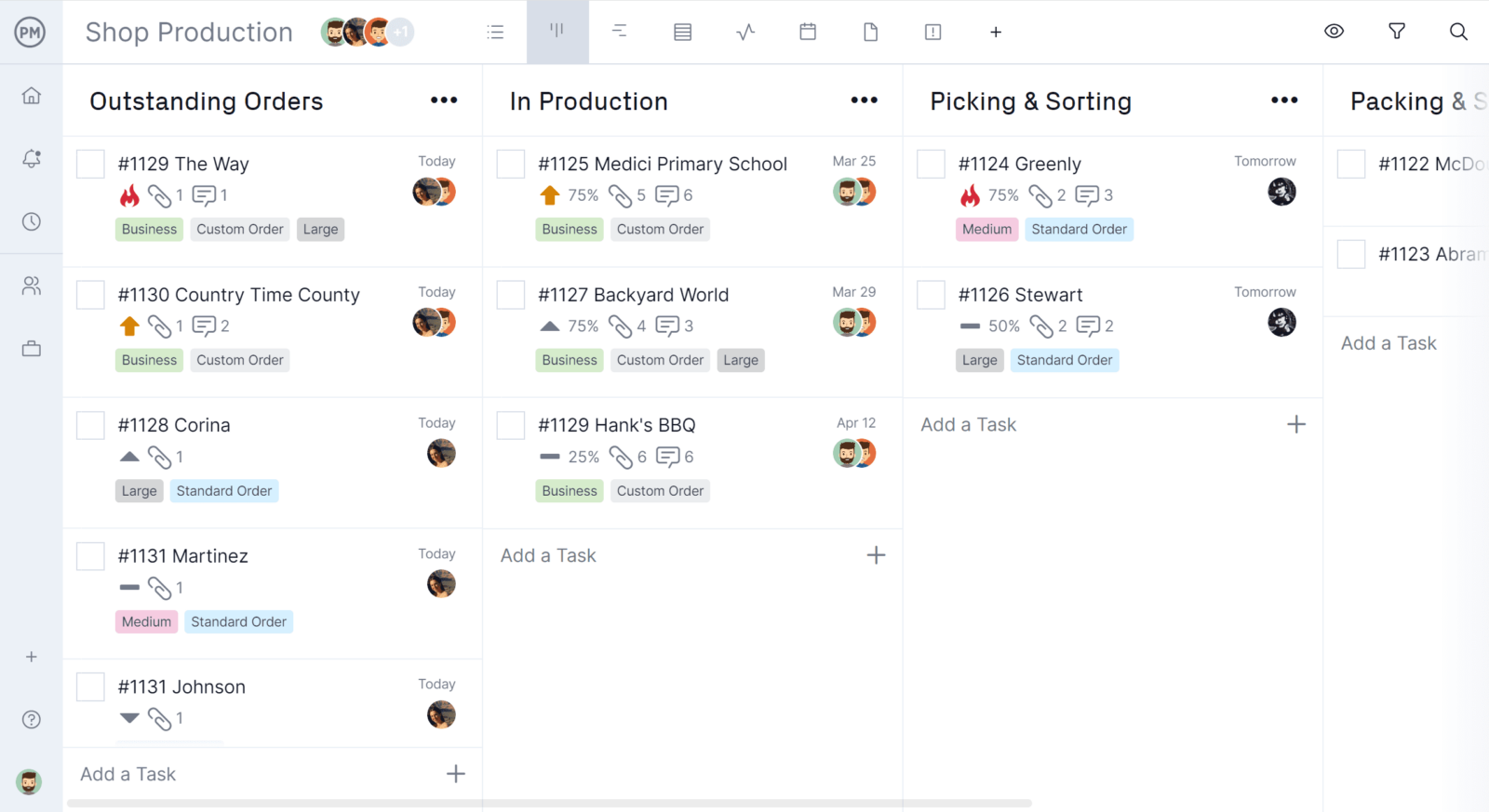
The kanban board visualizes the workflow as supplies move from the warehouse to the worksite. You see the full picture and can reallocate resources to avoid bottlenecks. The kanban is also a great tool for teams to manage their work. They can collect backlog tasks and manage their sprints on kanban.
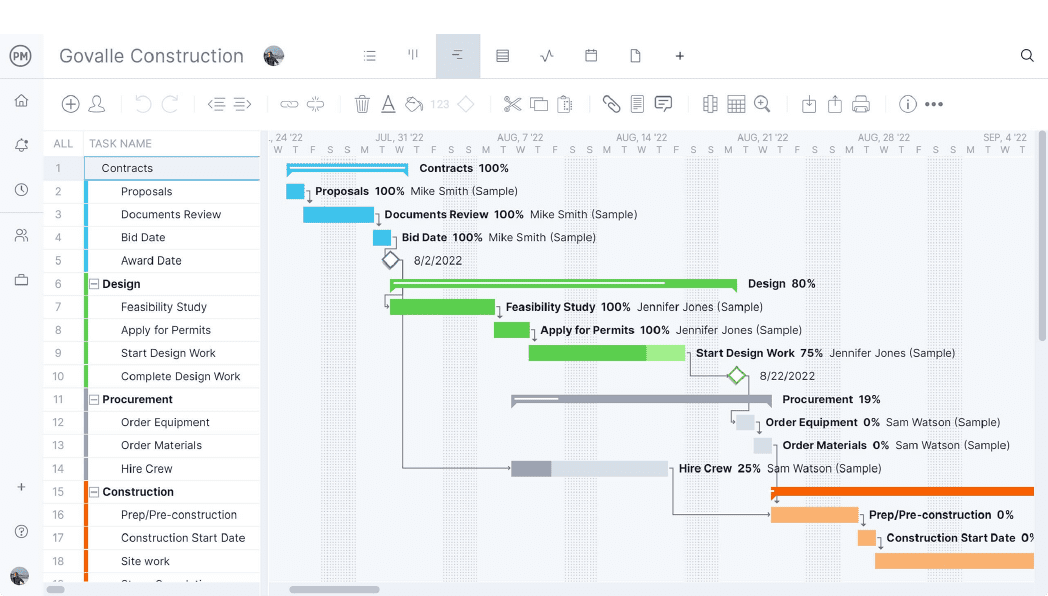
All the data is shared on the software. If you’re managing the project schedule on a Gantt, those tasks you assign to your team can be managed by them on the kanban board, task list or a calendar view. The Gantt lets you plan your procurements, setting milestones and linking dependencies to avoid bottlenecks.
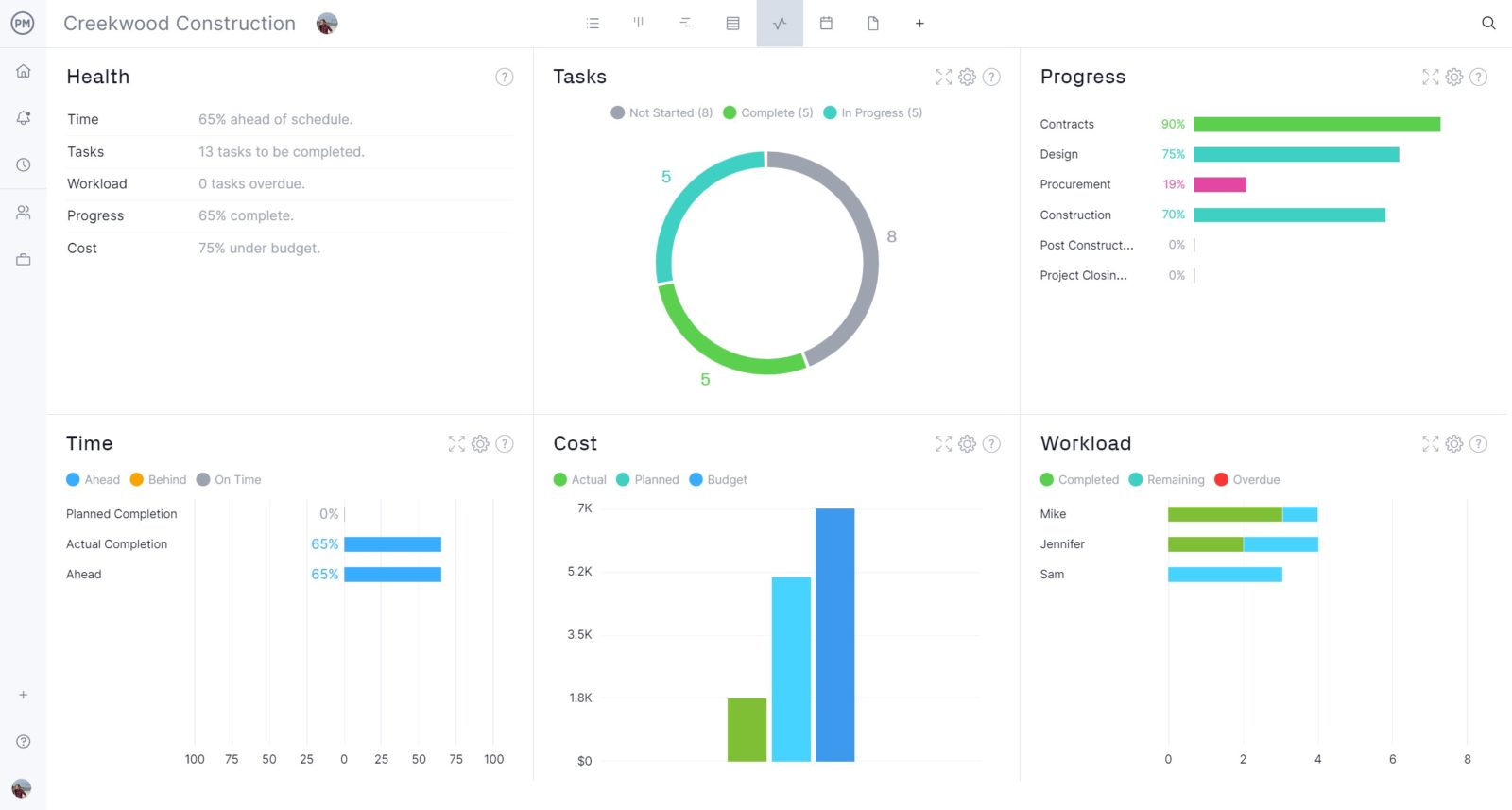
Get a high-level view of the project with our real-time dashboard. It updates with live data, which it then calculates automatically and displays in easy-to-read charts and graphs. You get project metrics on time, costs and more. For more detailed information, you can generate a report with one click, filter it to show what you want to see and then share it with stakeholders.
Related RFI Content
Using an RFI template is part of a procurement management plan. ProjectManager supplements its software with project management templates, guides, ebooks and a blog that explores all sides of project management. Here’s some related content to help you create your RFI.
Developing a working relationship with vendors and suppliers is an important part of managing your project. But it’s only one piece of the larger picture. If you’re looking for cloud-based software that can help you organize your project from planning to reporting, then give ProjectManager a try. Take this free 30-day trial today.
